Know Your Lore: The Fist of the First Dawn
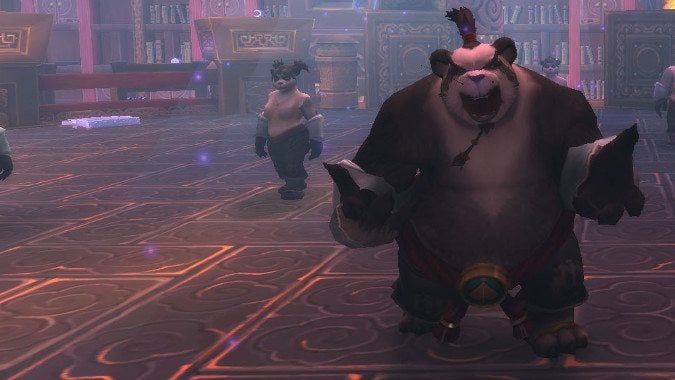
There are many kinds of monks — religious men and women who inhabit monasteries and devote themselves, for example — but World of Warcraft Monks are a different story: chi-wielding unarmed combat specialists who can heal wounds, strike like lightning, and dazzle an enemy with seeming intoxication. They owe their existence to the Pandaren of Pandaria. But more accurately, they really owe their existence to the Pandaren’s oppression. For thousands of years, the wicked Mogu ruled what is today known as Pandaria, and in the process crushed the other peoples of their homeland with grueling slavery.
The rise of the Monk is the story of an oppressed people finally rising against those who enslaved and tormented them.
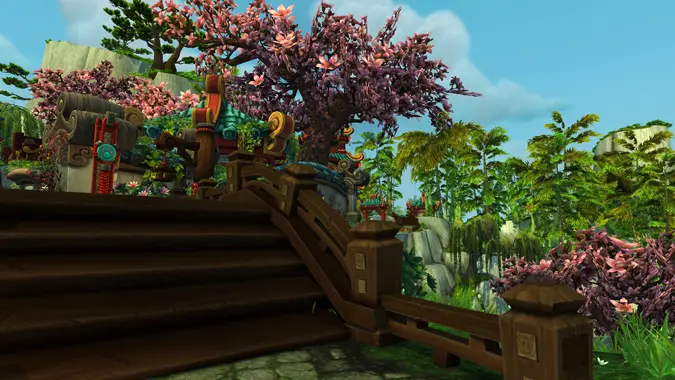
The Distant Past
Before the Pandaren Empire, there was the Mogu Empire. And before the Mogu Empire, there was the Jinyu Empire. The Jinyu were an ancient race born from the waters of the Vale of Eternal Blossoms, whose magic was concentrated from that of the Well of Eternity itself, one of three places where life burst forth in astonishing power along with Un’Goro Crater and Sholozar Basin. It was in places such as this that the Titan-Forged ordered Azeroth, and the Jinyu grew wise and strong by their proximity to these powerful magics. (The Jinyu were descended from the humble Murloc.) Over the years, as the Mogu originally created by the Titans to protect the Vale succumbed to the Curse of Flesh, the Jinyu established an empire in the lands surrounding the Vale.
Then came Lei Shen, the Thunder King. He was determined to restore his people to their rock and stone origins and continue the work of the Titan-Forged on Azeroth. He and his united Mogu went to war with the Jinyu. Despite not being particularly warlike, the Jinyu gave battle for forty days and nights and indeed nearly defeated the Mogu. Their mastery of water magic did not save them, ultimately, and the Mogu soon crushed them as well as the Hozen and Pandaren of the region. The Mogu even twisted the native life of the region into new forms, creating the Saurok and Grummle peoples. All was slavery and toil for anyone not of the Mogu for thousands of years.
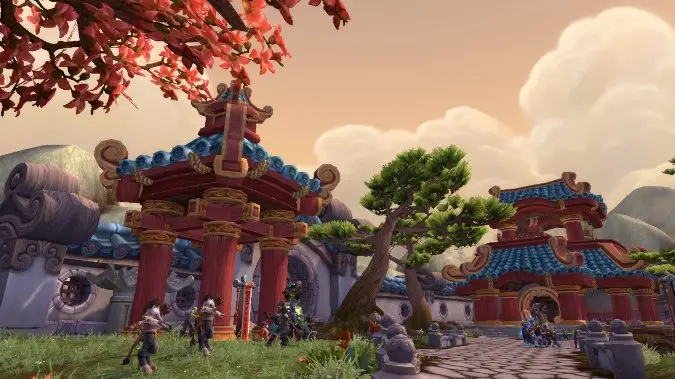
The Open Hand
The Mogu brought many innovations to the region. They unified the language, produced a common system of weights and measures, even produced written laws (the Jinyu had felt no need to do so, as their Empire was mostly confined to their own people, and the other races of Pandaria were left to their own devices) which included punishments like public evisceration for almost any offense.
The other races of the Mogu Empire were crushed and forced to provide slave labor to build the wall separating the Mogu territory from that of the Mantid, their ancient enemies. Once, the Mogu had fought the Mantid as part of the Titan-Forged’s destruction of the Black Empire and their Old God masters — now, they enslaved other races and forced them to do the work of keeping the Mantid at bay.
Of all the races of Pandaria, though, one had a peculiar ability to resist the suffering inflicted by the Mogu. After Lei Shen passed away (entombed with the potential to be returned by his Zandalar allies) he was succeeded by Emperors even more cruel, bloodthirsty and oppressive than he was. The Hozen, Jinyu, Grummles and others found themselves unable to come up with a way out of their servitude, for the Mogu forbade their slaves to carry weapons.
Until the coming of Kang.
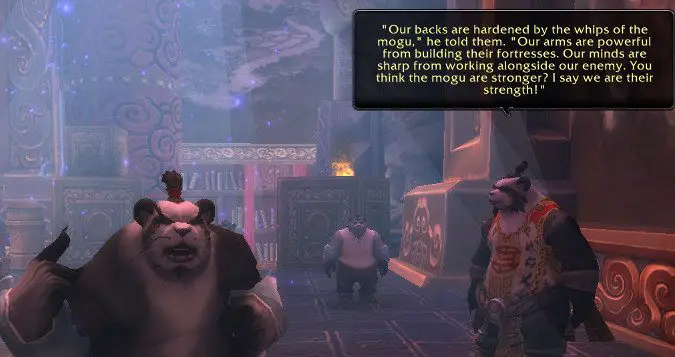
We are their strength
Kang was no one important: a Pandaren slave who displeased his Mogu overseers in the time of the reign of Emperor Lao-Fe. This Mogu was so relentlessly cruel that even his own people called him a monster among beasts and feared his rages. He enjoyed a special form of torture for his Pandaren slaves — when a slave was disobedient or insolent or simply displeased a Mogu in some way, that slave’s family would be taken to the Serpent’s Spine, the great wall between the Mogu and Mantid lands. There that family would be used as fodder for the Mantid swarm. Unarmed, they would most likely die horribly.
One such Pandaren was Kang. It is not known what Kang did to displease the Emperor. What is known is that his son Sheilun was taken from him and sent to the wall. In sorrow and anguish, Kang donned black clothing of mourning and walked the land. But in so doing he learned a valuable lesson by studying the Mogu and their Empire.
Namely, Kang learned that the Mogu Empire was like a grand old tree, with a massive trunk and broad branches, that had not yet succumbed to rot that had begun to spread through it. The Mogu appeared powerful, with dark sorcery and vast armies, but their power was illusory. Slaves did everything for the Mogu — grew their food, tended their lands, even carried the important messages and supplies to their troops. Slaves built their siege weapons and maintained their fortresses. Without slaves, the Mogu could not feed themselves, clothe themselves, or even wage war. The Mogu so feared their slaves that they dreamed up ever more elaborate and cruel punishments for them and would not countenance the slaves bearing arms, not even to defend against the Mantid.
Kang began speaking to his fellow slaves of these truths. He would dare them to strike him, and they would try, but always they would fail as he evaded their blows or intercepted them with his own hands. He told them what he had discovered about the Mogu, namely that the Mogu’s greatest weakness was the very thing that sustained them. They needed their slaves for every aspect of their lives. And Kang’s words spread, not just to the Pandaren — the Mogu, Jinyu and Grummles too heard these words, especially Kang’s most famous epithet. “You think the Mogu are strong? I say we are their strength!”
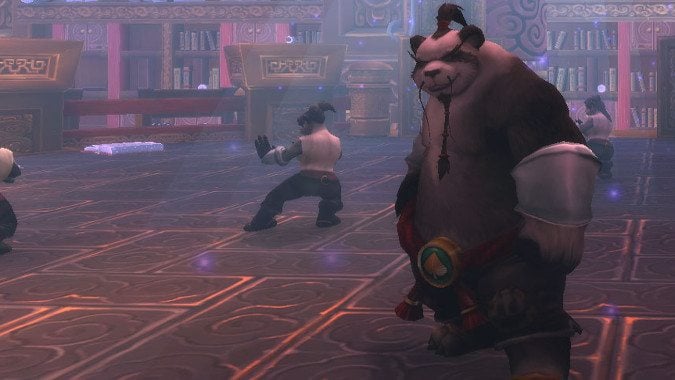
The Fist of First Dawn
Kang realized that the Mogu could not be fought by conventional means, and so he taught any who would learn the secrets he’d gained through a lifetime of toil. How to evade, to be wind and water, in motion and impervious. Those that followed Kang were the first Monks, and Kang became known as the Fist of First Dawn for his role in the revolt against the Mogu. While history has lost much of Kang’s history (it is, as an example, unknown if he ever found his son Sheilun again) Kang did eventually meet the cruel Lao-Fe in hand to hand combat. Although it cost him his life, he did defeat the Mogu Emperor and in so doing helped speed the end of the Mogu as rulers of the land.
The martial tradition started by Kang, the Fist of the First Dawn, continues to this day. Monks trained on the Peak of Serenity can trace their origins back to this humble Pandaren who fought a tyrant with nothing more than his wits and his body. The open hand became a closed fist but Kang never forgot his people, his family, or his loss — rather he turned himself into a weapon to end the oppression of those he cared for.
Please consider supporting our Patreon!
Join the Discussion
Blizzard Watch is a safe space for all readers. By leaving comments on this site you agree to follow our commenting and community guidelines.
 @MatthewWRossi
@MatthewWRossi



